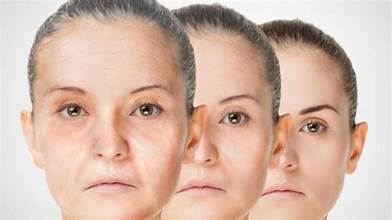
In recent years, the quest for age reversal and whole-body rejuvenation has gained significant traction, driven by scientific advancements and a growing interest in prolonging healthy human life. This article delves into the latest breakthroughs in age reversal, exploring the science behind it, potential treatments, and what the future holds for this exciting field.
The Science of Aging and Age Reversal
Aging is a complex biological process characterized by the gradual decline of cellular function and integrity. At the core of age reversal research lies the understanding of cellular mechanisms, including DNA repair, telomere shortening, and the accumulation of senescent cells.
DNA Repair and Telomeres
DNA damage accumulates over time due to environmental factors and cellular processes. Efficient DNA repair mechanisms are crucial for maintaining genomic stability. Telomeres, protective caps at the ends of chromosomes, play a vital role in cellular aging. As cells divide, telomeres shorten, leading to cellular senescence or apoptosis. Recent studies have shown that extending telomeres can delay aging and improve cellular function.
Senescent Cells and Cellular Rejuvenation
Senescent cells, often referred to as “zombie cells,” cease to divide but remain metabolically active, secreting pro-inflammatory factors that contribute to aging and age-related diseases. Researchers are exploring senolytics, drugs that selectively eliminate senescent cells, as a means to promote tissue rejuvenation and extend healthspan.
Breakthrough Treatments for Age Reversal
Several cutting-edge treatments are being developed and tested for their potential to reverse aging and rejuvenate the body. Here are some of the most promising approaches:
Stem Cell Therapy
Stem cells have the unique ability to differentiate into various cell types, offering the potential to replace damaged or aged cells. Recent advancements in stem cell therapy have shown promise in regenerating tissues and organs, improving function, and reducing the effects of aging.
Gene Therapy
Gene therapy involves modifying the genetic material within cells to correct or replace faulty genes. This approach has shown potential in treating genetic disorders and could be applied to age reversal by targeting genes involved in aging processes. For instance, researchers are investigating ways to activate genes that enhance cellular repair and longevity.
NAD+ Supplementation
Nicotinamide adenine dinucleotide (NAD+) is a coenzyme involved in cellular energy production and DNA repair. NAD+ levels decline with age, contributing to reduced cellular function. Supplementation with NAD+ precursors has been shown to improve mitochondrial function, enhance DNA repair, and extend lifespan in animal models.
Senolytics
As mentioned earlier, senolytics are drugs that target and eliminate senescent cells. Clinical trials have demonstrated that senolytic treatments can reduce inflammation, improve tissue function, and extend the healthspan of individuals. These treatments hold promise for mitigating age-related diseases and promoting whole-body rejuvenation.
The Future of Age Reversal
The future of age reversal is bright, with numerous ongoing studies and trials aimed at understanding and combating the aging process. Here are some key areas of focus for future research:
Personalized Medicine
Advancements in genetic sequencing and biomarker identification are paving the way for personalized medicine, where treatments can be tailored to an individual’s genetic makeup and specific aging processes. This approach could maximize the efficacy of age reversal therapies and minimize potential side effects.
Combination Therapies
Combining multiple age reversal strategies, such as gene therapy, stem cell therapy, and senolytics, may offer synergistic effects, enhancing overall rejuvenation. Researchers are exploring the best combinations and dosages to optimize results.
Ethical and Societal Implications
As age reversal technologies advance, ethical and societal considerations become increasingly important. Questions about accessibility, affordability, and the potential for extending human lifespan beyond current expectations need to be addressed. Policymakers and scientists must work together to ensure equitable access and responsible use of these technologies.
Conclusion
The pursuit of age reversal and whole-body rejuvenation is no longer confined to the realm of science fiction. With significant breakthroughs in stem cell therapy, gene therapy, NAD+ supplementation, and senolytics, the dream of reversing aging is becoming a reality. As research progresses, the potential to not only extend lifespan but also enhance the quality of life in later years is within reach. The journey towards age reversal is just beginning, and the future holds immense promise for this transformative field










